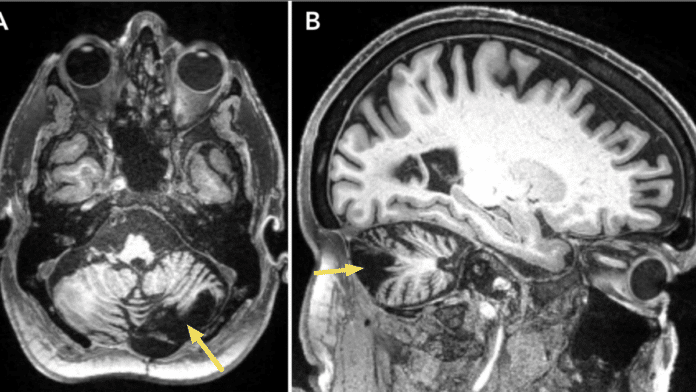Cerebellar ataxia describes a group of neurological disorders that affect coordination, balance, and control of muscle movements. It results from damage or dysfunction of the cerebellum, a part of the brain responsible for coordinating voluntary movements.
For cerebellar ataxia recovery, there are not enough therapeutic choices accessible. Although associated with nonuniform cerebellar ataxia etiologies and different rTMS treatment methods, the limited data using repetitive transcranial magnetic stimulation (rTMS) have shown improvement in symptom load. Limited information is also available regarding the use of rTMS in those who are experiencing stroke-related symptoms.
In a recent study, UCLA Health researchers discuss encouraging outcomes with repeated transcranial magnetic stimulation (rTMS) in treating post-stroke cerebellar ataxia, a disabling disorder characterized by decreased balance and coordination.
Scientists specifically report on the case of a 58-year-old male who had experienced a cerebellar hemorrhage approximately 12 years previously. Despite extensive rehabilitation, symptoms like an unsteady gait, balance problems, and urinary incontinence persisted.
The patient requested advice regarding potential rTMS therapy. His walk was slow and unsteady, and he struggled with balance and stability, which were his main complaints. It was decided to use bilateral cerebellar rTMS, a novel strategy for treating the problem.
The patient received rTMS during five daily sessions that targeted both the right and left hemispheres of the cerebellum. Just two days of stimulation were enough to see a subjective improvement in the patient. There were substantial improvements by the fifth day.
The patient’s balance improved, as indicated by a score on the Berg Balance Scale from 27 to 38, and walking speed increased from 0.57 m/s to 0.60 m/s. More importantly, the patient could stand up from a sitting position without assistance and easily bend to pick up a pencil from the floor. When doing activities of daily living in the restroom without using hand supports, which he could not accomplish before therapy, he noted increased balance and stability.
Evan Hy Einstein, Department of Psychiatry & Biobehavioral Sciences at the UCLA David Geffen School of Medicine, said, “This case represents the first instance of bilateral cerebellar rTMS used to treat post-stroke cerebellar ataxia. Further research is warranted to ascertain long-term clinical benefits and explore the underlying neural mechanisms of this innovative treatment. Still, It underscores the potential of tailored treatment protocols that consider the specific etiology of ataxia.”
Journal Reference:
- Einstein, E.H., Corlier, J., Matthews, C. et al. Bilateral Cerebellar Repetitive Transcranial Magnetic Stimulation for Chronic Ataxia After Hemorrhagic Stroke: a Case Report. The Cerebellum (2023). DOI: 10.1007/s12311-023-01618-1
